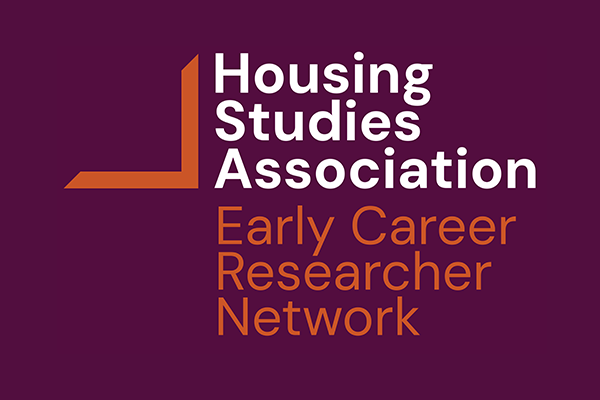Taking the Temperature of NG6
Dr Danielle Butler, Project Development Manager, National Energy Action
This blog shares insights from research published in collaboration with Marie Curie in 2023
More than 90,000 people die in poverty every year in the UK, research has shown. For those of working age, more than 1 in 4 are in poverty in their last year of life, and among parents of working age, more than 2 in 3 experience poverty in the last five years of life. Women and people from minority ethnic groups are more likely to die in poverty.
Fuel poverty and energy costs, particularly in recent years, are a critical part of this problem. Deteriorating health associated with terminal illness often means higher costs to heat and power the home sufficiently. Many at the end of life struggle to afford increased costs due to a combination of often significantly reduced incomes and additional significant costs associated with living with a terminal illness. For example, research has suggested that energy bills can rise by up to 75% following a terminal diagnosis and living with cancer can cost up to £570 more per month. The consequences of living with illness in a cold home can be severe: it can lead to new infections, make existing symptoms flare up or become worse, and affect mental wellbeing. In the worst cases, enduring life in a cold, poor quality home may even hasten death.
Fuel poverty, a situation where a household is unable to access or afford enough energy to stay warm, safe, and healthy at home, is estimated to affect roughly 6 million UK households - more than 1 in 10 on average. A combination of low incomes, energy inefficient and poor quality homes, and high and rising energy prices is widely regarded as the key causes of fuel poverty. And the numbers of those affected – which will necessarily include those dying in fuel poverty - have been rising with the continuing energy crisis pushing millions more households into fuel stress and crisis.
Certain vulnerable groups are disproportionately impacted by fuel poverty: for example, single person households, those on low incomes, people living in the private rented sector, and families with children. Among households that are classed as fuel poor, more than 40% are living with a disability or an illness that is long-term, chronic, or terminal. For these people, higher energy costs are often resulting from longer periods of time in the home and greater energy needs, for example with powering vital medical equipment.
Since its publication in 2015, the National Institute for Health and Care Excellence’s (NICE) NG6 guideline has been recognised as a landmark resource for understanding and deploying appropriate action to support those at risk of worsening health because of cold homes and fuel poverty. Comprising of twelve recommendations, NG6 is targeted towards Health and Wellbeing Boards (HWBs), and those working in health and social care, energy, housing, and other relevant sectors.
Despite NG6 being recognised as a key resource for tackling the health impacts of cold homes, there is limited understanding of the extent to which the guidance has been implemented, as well as related successes and challenges of delivery. Even less is known about what this means for critical vulnerable groups, such as those at the end of life – a group that can experience a vicious cycle of fuel poverty.
Working in collaboration with Marie Curie, we have undertaken critical research to address this gap in understanding and make recommendations for action. The research examines how the recommendations in NG6 are being delivered, with specific consideration of what this means for people at the end of life in England and Wales. Through an evidence review and analysis of publicly available resources (e.g., Joint Strategic Needs Assessments, Health and Wellbeing Strategies, etc.) as well as reports and resources shared in response to more than 370 Freedom of Information requests, the research provides a snapshot of what is happening in relation to the NG6 recommendations.
The analysis draws on the work of local authorities, health and wellbeing boards, integrated care boards, government, and other national bodies such as public health. It focuses on NG6 recommendations considered more or most pertinent to those at the end of life or with a terminal illness, including the development of a strategy, establishment of a single point of contact, processes for safe discharge to a warm home, and efforts to raise public awareness.
While many positive examples of how NG6 is being implemented can be found, it is clear that more action is needed. Progress to date, in the nearly ten years since the introduction of NG6, has been patchy and inconsistent. And in many cases, there is little to no data or detail on its implementation. This is particularly concerning given that this is a mandatory set of guidelines in England, and means that either there are gaps in existing activity, or that work is happening but is not known about, making scaling up or learning from examples of best practice difficult.
A warm, safe, and healthy home should be accessible to all. This is especially the case for those living through one of the most worrying, painful, and vulnerable times – with a life-limiting illness or disability and at the end of life. Financial security and a safe environment are factors that people considered key determinants of a ‘good death’, and we must therefore ensure that existing tools in the box – such as the NICE NG6 guidelines – are utilised fully by those working across the health and housing sectors.
Several recommendations are set out for research, policy and practice at the intersection of housing, energy, and health, including the need for:
· Further analysis to understand the health consequences of fuel poverty for vulnerable groups such as those living with terminal illness
· People with a terminal illness need to be explicitly identified as a key ‘health-related’ vulnerable group in work targeted towards reducing fuel poverty and health inequalities
· Research to better understand the specific successes and challenges of schemes and services that are currently delivered under NG6
· Critical localised and strategic documents, such as Joint Strategic Needs Assessments and Health and Wellbeing Strategies, to go further and outline solutions and strategic activity to minimise winter deaths, as well as be more readily and easily available.
· NG6 implementation to complement existing strategies and plans, specifically in the context of terminal illness, for example, in end of life or palliative care plans.
· The modification or expansion of training for frontline professionals focused on supporting people living with terminal illness and their families living in or at risk of fuel poverty
· To better understand barriers in accessing support that people with a terminal illness face and implement awareness raising campaigns and targeted support for this vulnerable group specifically[DB1]
You can read more about the research and access the report at: https://www.nea.org.uk/publications/taking-the-temperature-of-ng6/
About Dr Danielle Butler:
Danielle has a background is in social research. As Senior Research and Policy Officer with the leading fuel poverty charity, National Energy Action, her work has focused on housing condition, health and fuel poverty. She is now leading the charity’s multi-year, GB-wide healthy and housing programme, Warm Homes, Healthy Futures, working closely with the health sector and energy networks. Danielle is a founder and Trustee of the Fuel Poverty Research Network, and works with the Department for Business, Energy and Industrial Strategy to co-convene the Health and Housing Working Group.
You can contact Danielle directly at [email protected]






